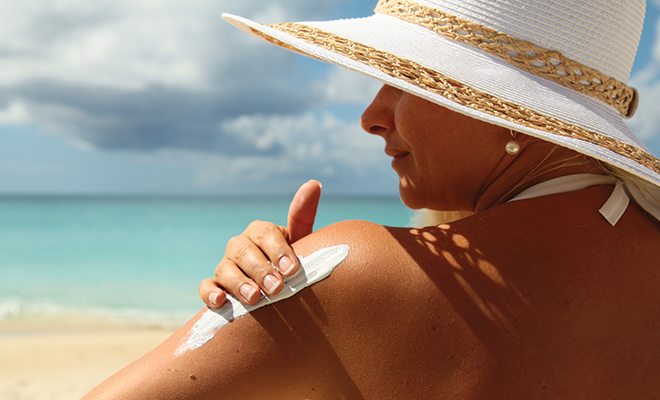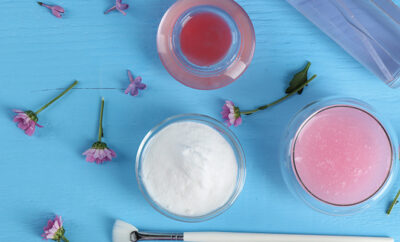
Sun Safety for Skin and Hair
Growing up in Southern California, my friends and I used to work on our summertime tans as if it were our summertime job. A couple of friends who wanted to keep their suntan year round even had tanning salon memberships.
Now we’re learning the hard way that our youthful tans left us with skin that is probably more susceptible to wrinkling and premature aging. Even worse, we could be among the one in five Americans who will develop skin cancer at some point in their lifetime.
Any dermatologist will tell you that the effects of sun damage are cumulative over a person’s lifetime, meaning it’s never too late for sun protection. I love sunshine too much to give it up, so now I pay attention to the advice of experts when it comes to safeguarding my skin and hair from the sun’s harmful rays.
Ultraviolet rays are the enemy when it comes to sun exposure. The Skin Cancer Foundation warns about two types of ultraviolet rays: UVB (short-wave) rays and UVA (long-wave) rays. While UVB rays are known to be the cause of sunburn and skin cancer, there is growing evidence that UVA rays, which have more energy and penetrate the skin more deeply, have the potential to cause long-term damage in terms of skin aging and eye damage. And everyone, regardless of race, ethnicity or skin tone, can be affected, so this advice is universal.
Besides staying out of the sun altogether, the best way to protect your skin from damaging UV rays is through the correct application of sunscreen. This means applying a “golf ball-size” amount of sunscreen when you’re going to be out in the sun, and then reapplying it every 90 minutes. UV rays can penetrate cloud cover, so it’s important to use sunscreen even on overcast days. Be aware that geography has an impact on sun exposure, with greater UV exposure closer to the equator and at higher altitudes, and increase the amount of sunscreen you use if you live in or travel to these locations.
Covering up is another way to protect your skin from the sun. Any type of clothing will lower UV exposure, but if you’re taking part in an outdoor activity such as gardening, biking or running on a regular basis, you may want to invest in clothing designed to provide maximum sun protection. According to outdoor retailer REI, nylon and nylon-polyester blends are better than natural fibers such as cotton when it comes to sun protection.
When shopping for protective clothing, look for a UPF, or Ultraviolet Protection Factor, rating on the label. This indicates that special dyes and fabric treatments have been used to disrupt or absorb UV rays. As with the SPF rating on sunscreen, a higher UPF rating on clothing indicates better protection. While a typical white cotton T-shirt has a rating in the UPF5 range, protective clothing is available with ratings of UPF50 and higher.
Don’t forget about your hair when it comes to sun protection. Prolonged UV exposure can damage the cuticle of the hair, which is the outermost layer of the hair shaft. The cuticle protects the hair and provides strength. When it’s damaged, hair can become thin, dry, brittle, broken, discolored and frizzy. Like tanned skin, sun-bleached hair is actually damaged. Hair that has been treated with hair irons, hot curlers, dryers and hair lightening or straightening products may already have a compromised cuticle, making it even more vulnerable to sun damage.
You can protect your hair by avoiding the most intense rays of the sun, but you can’t apply sunscreen to your hair. Instead, the best form of protection is to cover your hair with a hat or umbrella. The best hats for UV protection have a brim at least four inches wide that will shade the face and neck and cover the scalp and hair. The Cleveland Clinic also recommends using a conditioner that’s formulated for your hair type to help fight cuticle damage.
Here’s a final word for parents. Children probably spend more time outdoors than any other segment of the population. This is the time in life when many people receive the type of serious sunburn that is a precursor to skin cancer in later life. This is why parents need to both protect and educate their children when it comes to sun exposure. Here’s a simple ABC reminder. “A” stands for Away, meaning stay out of the sun as much as possible from 11:00 a.m. until 3:00 p.m., when UV rays are most intense. “B” stands for Block, which means use sunscreen with a high SPF factor and reapply as needed. “C” stands for Cover up when the sun is most intense with clothing, UV protection sunglasses and a hat.
Come to think of it, this is a great reminder for all of us who spend time in the sun! ■
Sources: my.clevelandclinic.org, skincancer.org, rei.com and webmd.org.







